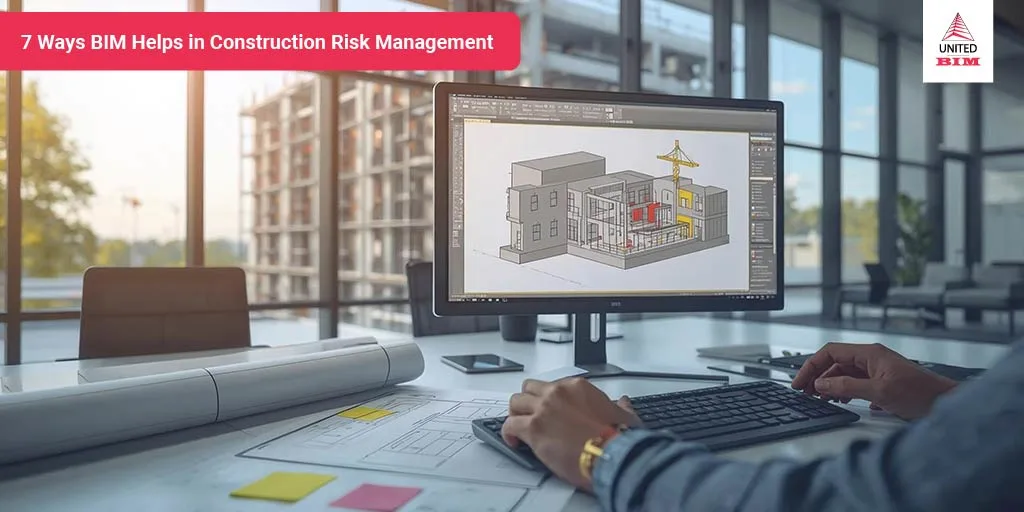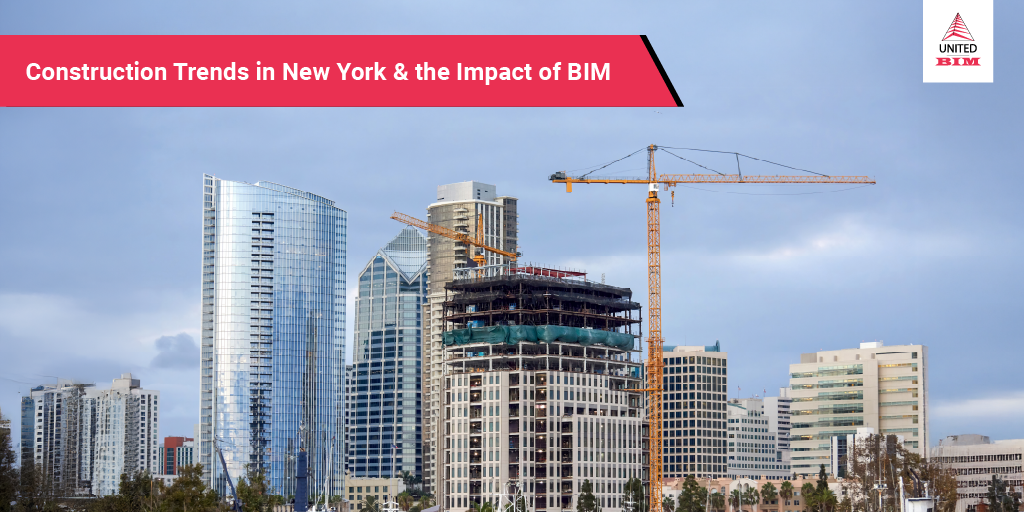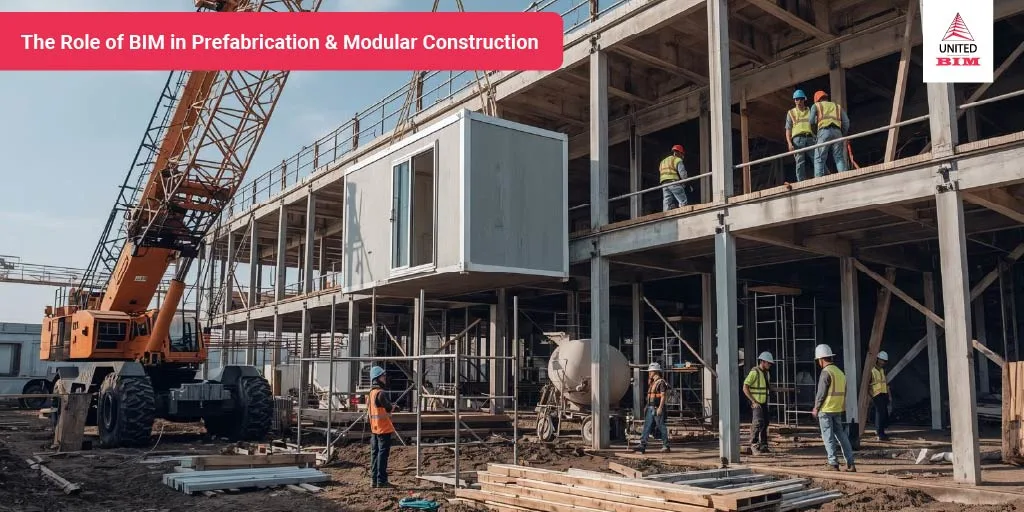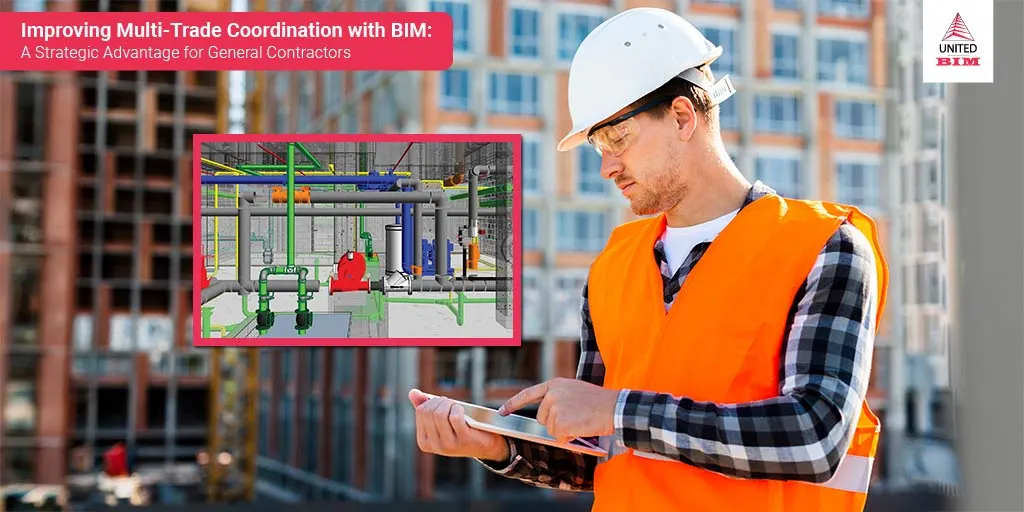Last updated on: November 18, 2025
Construction projects are complex. With multiple stakeholders, overlapping schedules, intricate designs, and high financial stakes, managing risks effectively is crucial. A single design clash, budget miscalculation, or scheduling error can result in costly rework, delays, or even safety incidents.
While many professionals understand the general benefits of Building Information Modeling (BIM), fewer recognize its less obvious but highly impactful role in risk management. Traditionally, construction risk management has relied heavily on manual processes and managerial intuition. This approach often leaves projects vulnerable to errors, miscommunication, and unexpected delays.
In this article, we’ll explore seven keyways BIM supports construction risk management, and highlight the risks that arise when these practices are not applied.
What is Construction Risk Management and Why It Matters
Construction risk management is the systematic process of identifying, analyzing, and mitigating potential threats during the stages where BIM has the greatest impact- primarily design, preconstruction planning, and coordination. At these stages, errors are cheaper to fix and the benefits of BIM are maximized.
Common construction risks include:
- Design conflicts between architectural, structural, and MEP-FP systems
- Material miscalculations or shortages
- Safety hazards due to inadequate planning or coordination
- Non-compliance with local building codes or standards
Ineffective risk management can lead to project delays, budget overruns, legal issues, and safety incidents, impacting both stakeholders and owners. BIM provides a proactive, digital-first solution that transforms how risks are identified and mitigated.
How Does BIM Help Mitigate Construction Risks?
BIM goes beyond 3D modeling. It integrates design, cost, schedule, and operational information into a single, centralized model, creating a common data environment (CDE) for all stakeholders.
By doing so, BIM allows teams to:
- Detect potential conflicts before construction begins
- Optimize scheduling and resource allocation
- Ensure compliance with regulations
- Improve coordination among all project participants
- Enhance safety planning and long-term operational management
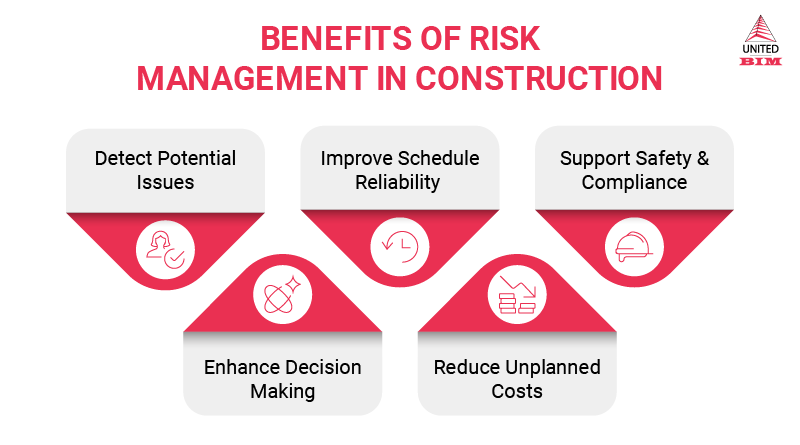
Let’s explore these benefits in detail.
01.
Enhanced Visualization and Planning
Misinterpreted 2D drawings, unseen design conflicts, and poorly sequenced construction steps can result in rework, delays, and increased costs.
How BIM helps:
BIM provides 3D, 4D, and even 5D visualization, giving teams a clear understanding of the project before construction starts. Architects, engineers, and contractors can see the full structure, anticipate potential issues, and optimize the sequence of tasks.
02.
Accurate Resource and Cost Management
Miscalculations in quantities, poorly allocated labor, or underestimated budgets can increase financial risk and delay the project.
How BIM helps:
With 5D BIM, quantities, costs, and schedules are linked to the model. This allows for accurate material takeoffs, labor planning, and cost forecasting. Design changes can be simulated, and their impact on schedule and budget can be assessed immediately, keeping projects financially on track.
03.
Regulatory Compliance and Standardization
Failing to meet building codes, safety standards, or specifications can result in fines, redesigns, or delays.
How BIM helps:
BIM allows teams to embed compliance checks into the design process, ensuring every element meets regulatory standards. Standardized documentation and model-based approvals reduce errors and streamline audits.
04.
Improved Collaboration Across Stakeholders
Miscommunication between architects, engineers, contractors, and owners can lead to scope gaps, rework, and conflicts.
How BIM helps:
A centralized BIM model ensures everyone works with the latest, accurate information. Changes are updated in real-time, reducing misunderstandings and enabling better coordination across all trades.
05.
Proactive Clash and Risk Detection
Clashes between architectural, structural, and MEP systems discovered on-site cause delays, additional costs, and safety hazards.
How BIM helps:
BIM tools allow for automated clash detection across multiple trades, enabling teams to resolve conflicts digitally before construction begins. This reduces on-site surprises and costly rework.
6.
Safer Construction Planning and Logistics
Poor site layout, congested work zones, or unsafe equipment placement can lead to accidents, delays, and increased operational risk.
How BIM helps:
BIM allows project managers to simulate construction sequences, crane paths, and material movement, identifying high-risk operations in advance. This ensures safer work environments and smoother site operations.
07.
Reliable As-Builts and Facility Management Support
Inaccurate as-built documentation increases long-term maintenance costs, operational errors, and lifecycle risk.
How BIM helps:
BIM delivers accurate as-built models that serve as a single source of truth for facility management. Using COBie-compliant data, facility managers can track assets, plan maintenance, and perform renovations efficiently, reducing operational risks and improving asset lifecycle performance.
Future of BIM in Construction Risk Management
BIM has already demonstrated significant advantages in reducing risks during design, preconstruction, and coordination phases. However, as technology evolves and projects become more complex, BIM has the potential to further enhance construction risk management in several ways.
Some areas where BIM can shape the future of risk mitigation include:
By leveraging artificial intelligence and machine learning, BIM can help predict potential design conflicts, schedule delays, or budget overruns based on historical project data.
- On-site sensors and IoT devices can feed live data into BIM models, offering information about structural loads, material conditions, or environmental factors.
- This integration has the potential to support ongoing monitoring and informed decision-making, improving safety and operational efficiency.
- Future BIM systems may automate code compliance verification, helping teams identify potential violations during the design or preconstruction phase.
- Advanced BIM workflows can simulate multiple construction scenarios, allowing teams to evaluate the impact of changes in design, sequencing, or resources.
- As BIM evolves, it can be more closely aligned with enterprise risk management systems, providing a comprehensive view of risks across design, procurement, construction, and lifecycle operations.
Risk in construction has traditionally been seen as something to avoid or react to, but with BIM, it can be managed, anticipated, and even leveraged as an advantage. Beyond reducing errors or clashes, BIM allows teams to explore scenarios, test design alternatives, and make informed decisions before a single nail is driven on site.
For construction professionals, this means moving from simply “managing risk” to harnessing it as a driver for efficiency, quality, and safety. The projects that adopt BIM with a risk-aware mindset are not just delivered on time, they are built smarter, safer, and more resilient.
Partner with United BIM
With over 1500+ successfully completed projects across the USA, United BIM helps construction teams transform potential risks into seamless, well-coordinated, and efficient project outcomes.
Our team ensures that complex designs, multiple trades, and tight schedules are handled confidently with BIM, so you can focus on delivering value while minimizing surprises.
Connect with United BIM today.
About the Author

Coordination Manager / VDC Manager at United BIM
With over 10 years of experience in the AEC industry, Akash Patel is a seasoned Coordination Manager and VDC Manager at United BIM. His expertise lies in managing complex MEP-FP coordination projects and leveraging cutting-edge BIM technology to ensure seamless collaboration and precision. Akash is dedicated to delivering high-quality, detailed models that meet the demands of modern construction. He is passionate about optimizing workflows and driving innovation within the BIM field.
